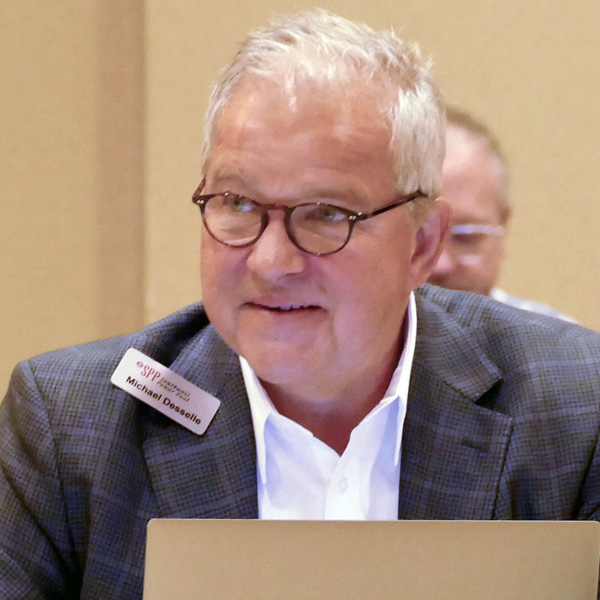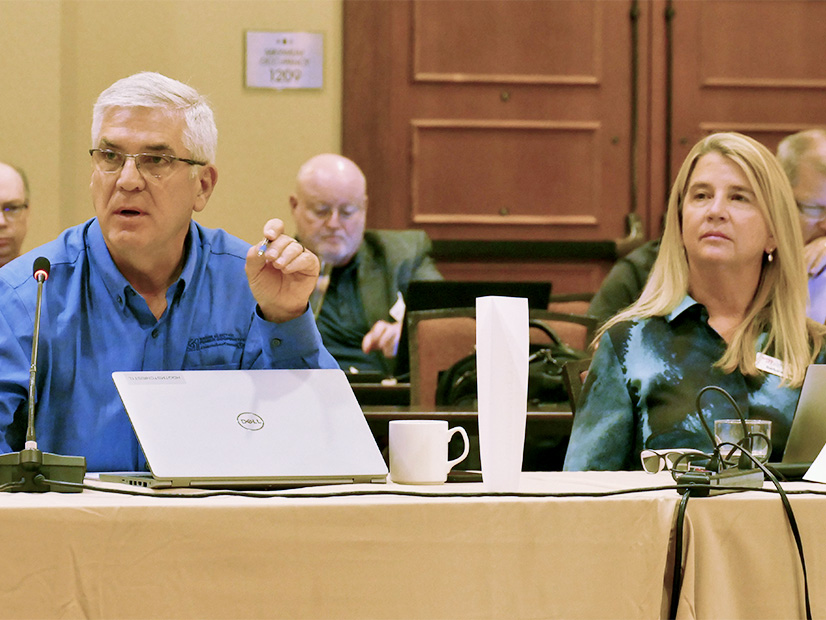WESTMINSTER, Colo. — An ad hoc group of SPP stakeholders and staff addressing crypto miners and other “non-standard” loads told the Strategic Planning Committee last week that the additional demand could aggravate resource adequacy concerns, yet also serve beneficial functions as well.
“If we really put our heads together and work through the process, there’s probably a solution,” said NextEra Energy Resource’s Matt Pawlowski, a member of the self-labeled “non-task force.”
The group has drafted a preliminary report but will let SPP staff assemble a strawman that will be brought back to the SPC in October to identify gaps between the loads and current system processes. Those proposals will likely get farmed out to the Markets and Operations Policy Committee and its working groups.
“This has to be vetted. It’s a huge policy issue,” Golden Spread Electric Cooperative’s Mike Wise said. “These policy implications need to be debated at the SPC.”
SPP defines non-standard loads as very large, potentially interruptible loads such as crypto miners, data centers, biofuel and alternative fuel manufacturers, and cannabis grow houses. The loads can be broken down into firm and non-firm load, some of which will be behind the meter.
 SPP’s Michael Desselle listens to feedback after briefing the SPC on non-standard load additions. | © RTO Insider LLC
SPP’s Michael Desselle listens to feedback after briefing the SPC on non-standard load additions. | © RTO Insider LLC
Since June 21, the grid operator has received 56 requests from such loads to change delivery points, ranging in size from 3 to 1,300 MW and totaling 7.1 GW.
“More of this is likely coming,” SPP’s chief compliance and administrative officer Michael Desselle said. “If these kinds of loads seeking to locate in low LMP zones concentrate in one particular zone, that only exacerbates resource adequacy concerns.”
Desselle said members have expressed concerns that the loads’ transient nature could leave the RTO with stranded transmission investments.
However, non-standard loads could also provide demand response if controls allow them to respond adequately, the group said in its draft report.
SPC in April created the ad hoc group to advise it on the issues associated with non-standard load wanting to connect to SPP and its members. (See “Ad Hoc Group to Look at Cryptos,” SPP Strategic Planning Committee Briefs: April 13, 2022.)
Energy Storage Group to be Retired
The SPC approved the Energy Storage Resource Steering Committee’s (ESRSC) retirement and the group’s recommendation that multi-use ESR initiatives remain on hold until at least January 2024 and be managed through the normal course of business.
Evergy’s Denise Buffington, who chaired the committee, said 25 of 38 initiatives that the ESRSC was responsible for have been completed. The other 13 have been assigned to primary working groups, with most be to be completed by 2025.
Staff last week filed tariff revisions with FERC to establish the framework under which an ESR can be considered a transmission asset, including clarifications to their cost allocation, planning, interconnection and market issues. (See “Storage Accepted as Transmission,” SPP Markets and Operations Policy Committee Briefs: Jan. 10-11, 2022.)
The SPC last year recommended staff and stakeholders continue developing rules that allow ESRs sited as generation resources and as transmission-only assets (SATOA). It also said rulemaking and policy for SATOAs should be completed before finalizing evaluations for multi-use ESRs in what has been labeled a “walk-before-run approach.”
Multi-use ESRs are on hold, pending SATOA implementation and additional production experience.
American Electric Power’s Richard Ross, a critic of task forces, marked the ESRSC’s retirement by presenting one of his coveted Gold Stars of Excellence to Buffington — “With a certificate of authenticity,” he said — for closing down the steering committee.
Counterflow Optimization Work Continues
SPP’s Micha Bailey told the committee that staff’s latest effort to add counterflow optimization (CFO) to the market will continue with a stakeholder workshop this fall to review stakeholder input and best practices from other ISOs and RTOs.
“Some of the stuff they’re doing we actually like,” Bailey said. “We want to bring that back to workshop for stakeholder feedback.”
“Those conversations are really helpful. That’s going to potentially lead to some better practices here,” Pawlowski said, noting that his company operates in every other organized market.
Staff will also share results of the survey it conducted in May of several stakeholder groups on CFO and other congestion-hedging proposals. The workshop will be conducted before the October set of governance meetings.
Stakeholders have been unable to come to a consensus on how to add CFO to the market. The initiative was recently handed off to the SPC. (See “Counterflow Optimization not Dead Yet,” SPP Board of Directors/Markets Committee Briefs: April 26, 2022.)
The Holistic Integrated Tariff Team recommended three years ago that counterflow optimization, limited to excess auction revenue, be added to SPP’s market mechanism that hedges load against congestion charges. The process, which keeps system transmission flows between two points in balance, was meant to address concerns about how congestion rights instruments are awarded and the current process’s efficiency.
Competitive Project Improvements OK’d
The SPC approved five process-improvement recommendations from the task force working to improve SPP’s transmission owner selection process (TOSP) under FERC Order 1000.
The recommendations are:
- Requiring addendums to reconciliation invoices to clarify true-up cost calculations and the invoices;
- Adopting a cost/cap/guarantee disclosure table to improve their transparency and impacts to quarterly tracking;
- Adding a scoring methodology table applicable to all scoring categories and sub-categories;
- Preventing the industry expert panel (IEP) scoring competitive bids from awarding additional points for early in-service dates or guarantees; and
- Requiring the IEP’s public report be posted no later than 21 calendar days prior to the Board of Directors meeting considering the competitive project’s approval.
The TOSP Task Force has made other process improvements after each of SPP’s competitive project solicitations. The RTO’s board has awarded four competitive projects since 2016, the most recent coming in April when NextEra Energy Transmission won a bid for a $55 million, 345-kV facility in Oklahoma. (See SPP Board of Directors/Markets Committee Briefs: April 26, 2022.)
The task force will draft the tariff revision requests’ language and work to gain the appropriate stakeholder and governance approvals, with the October meetings as a target. It will also continue working on the remaining 11 improvement items.


